If you’re a vegetarian or vegan and have never visited Japan before, don’t despair. You might have a picture of porky ramen, wagyu beef, and raw sushi in your head when you think of Japanese cuisine, but I’d like to introduce you to another style of cooking that is authentic, wonderful, and uniquely Japanese.
Even if you are an omnivore like myself, this fare is worth investigating. I saw it on a travel YouTube channel (unfortunately I forget which one) and made it a top priority to sample it during my Japan visit. As a disclaimer, I am an American white person, so if I get any of the facts wrong please feel free to correct me in the comments or point me in the right direction. I’m hardly an authority.
With that said, please let me introduce you to shōjin ryōri (精進料理) — Japanese “temple cuisine”.
History
Shōjin ryōri, roughly translated as “devotion cuisine”, is entirely plant based Buddhist cuisine, generally prepared in temples and monasteries for festivals. These meals are incredibly healthy and follow the Buddhist principles of doing no harm to living beings, using only ingredients such as vegetables, grains, seaweed, and fruit. Oh, and also, no garlic or onion, which I will explain later.
In the book Tenzo kyokun (Instructions for the Zen Cook), Soto Zen founder Eihei Dogen wrote the following:
In preparing food, it is essential to be sincere and to respect each ingredient regardless of how coarse or fine it is. (…) A rich buttery soup is not better as such than a broth of wild herbs. In handling and preparing wild herbs, do so as you would the ingredients for a rich feast, wholeheartedly, sincerely, clearly. When you serve the monastic assembly, they and you should taste only the flavour of the Ocean of Reality, the Ocean of unobscured Awake Awareness, not whether or not the soup is creamy or made only of wild herbs. In nourishing the seeds of living in the Way, rich food and wild grass are not separate.
This style of cooking has been refined since the 13th century in Zen Buddhist monasteries and temples, and is incredibly sophisticated. This is anything but simple fare, more on the level of fine dining. Luckily for us it tends to be pretty affordable (at least from a New Yorker’s perspective on food costs).
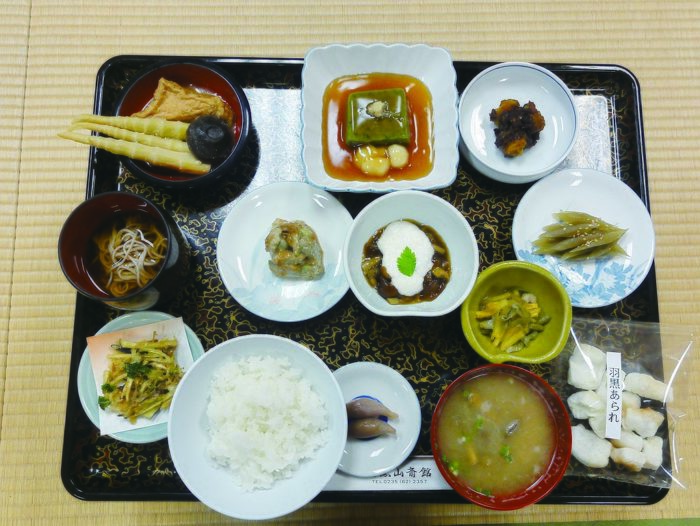
Principles
Shōjin ryōri emphasizes seasonality, with dishes being prepared based on locally grown and seasonly fresh ingredients.
This cuisine also strives to provide the human body with the five types of colors (white, black, red, green and yellow), five types of cooking (steamed, boiled, roasted, stewed and raw) and the five types of flavors (sweet, sour, spicy, bitter and savory). This creates an amazing array of flavor even without garlic, onion, creams, milk, cheese, or meat.
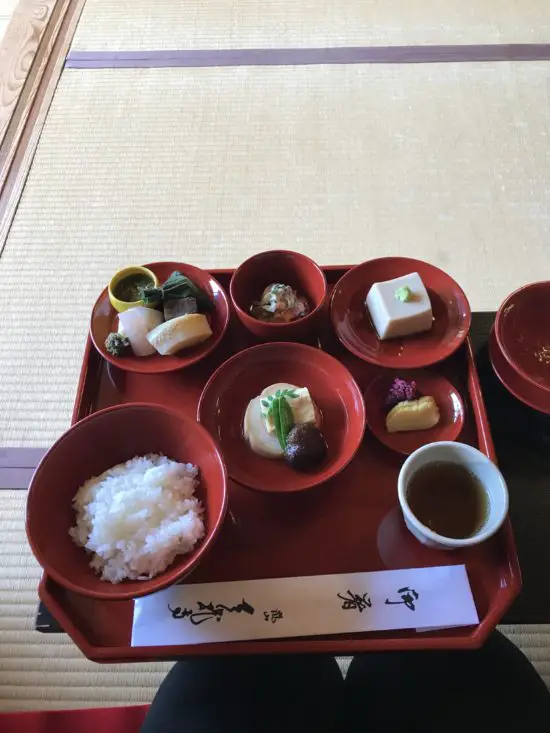
Why no garlic or onion? These sects of Buddhism ban the consumption of the “five acid and strong-smelling vegetables” of the Allium genus (shallots, mountain leek, allium chinense, garlic, and asafoetida).
I’ve read conflicting sources that these aromatic vegetables “cloud the mind” or “excite the libido” although I have a sneaking suspicion that somehow that was lost in translation or sensationalized. Some sources say it’s because the smell of garlicly monks would be distracting during meditation. I’d love clarification on that, but it does provide shojin ryori with much more subtlety and variety of flavor without the overpowering strength onion and garlic.
Common Ingredients
This list is by no means comprehensive, but here are some of the ingredients you may encounter in a shojin ryori meal:
- Koya-dofu: dried tofu
- Natto: fermented soybeans
- Abura-age: fried soybean curd
- Fu: cooked wheat gluten
- Konnyaku: gelatin like substance made from konjac plants
- Kabocha: squash and sweet potatoes
- Fuki: butterbur stalks
- Nanohana: rapeseed/canola plant
- Dashi stock made with kombu kelp
- Mirin: sweet rice wine
- Miso: fermented bean paste
Typical dishes
Many shojin ryori meals follow the principles of “ichi ju san sai” – one soup, three sides plus rice and pickles. Here are a few dishes you may run in to depending on the season.
- Shiro-ae: mashed tofu salad with vegetables and soy sauce and sesame
- Namasu: raw vegetables salad with daikon radish and carrot seasoned with vinegar
- Kenchinjiru: clear root vegetable soup, vegan dashi, and tofu
- Goma-Dofu: tofu-like dish made from sesame paste, kuzu powder, and water
- Veggie tempura: fried vegetables in rice flour
- Nasu Dengaku: deep fried eggplant with miso glaze
Places to try shojin ryori
In the Arashiyama neighborhood in Kyoto, there is a famous restaurant called Shigetsu. You need to reserve a time to eat there in advance, and kaiseki meals typically run about 3000 yen(?) – 7000 yen. Kaiseki means chef’s choice, so this is a preset arrangement of about 8-15 small courses. I highly recommend this experience, it will totally change your impression of what plant based cuisine can do.
There’s also an extensive list of restaurants on Savor Japan of where to try shojin ryori cuisine: https://savorjapan.com/CU0172/list/
Also try: a cooking class
This Kyoto based cooking class has a shojin cuisine style menu option, a great activity if you are looking to learn how to make some of these dishes yourself.
Sources
Taboo Foods: No Garlic, No Onions, No Nothin’
https://savorjapan.com/contents/more-to-savor/shojin-ryori-japans-sophisticated-buddhist-cuisine/
Pin it:
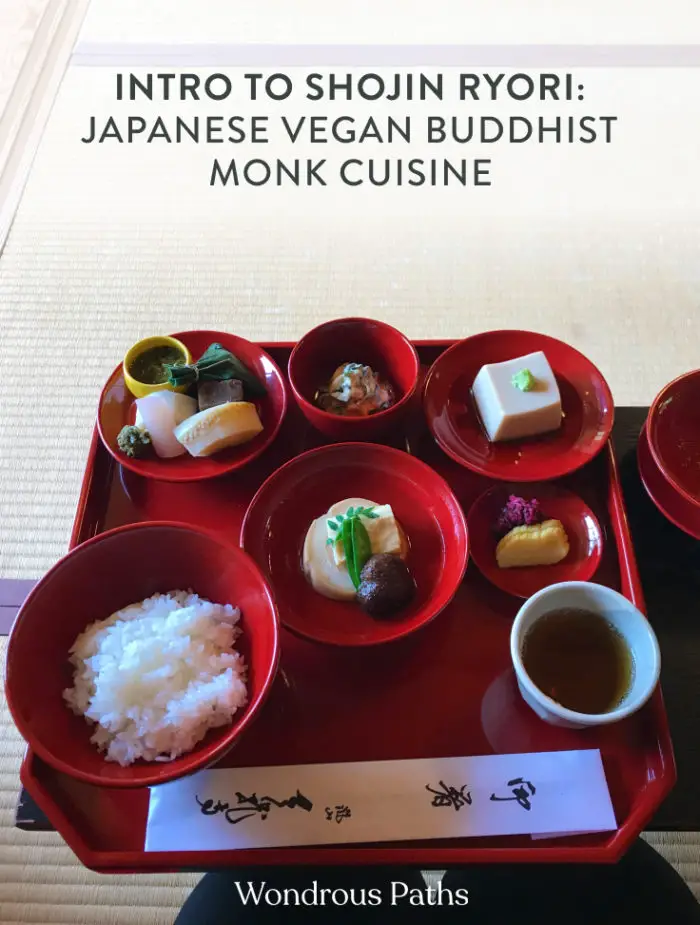
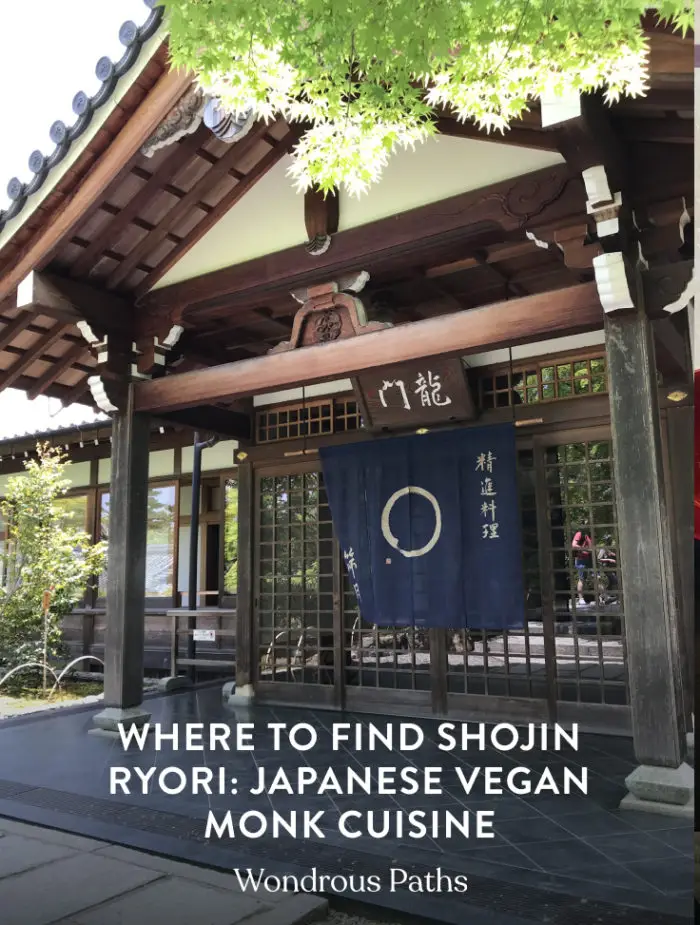


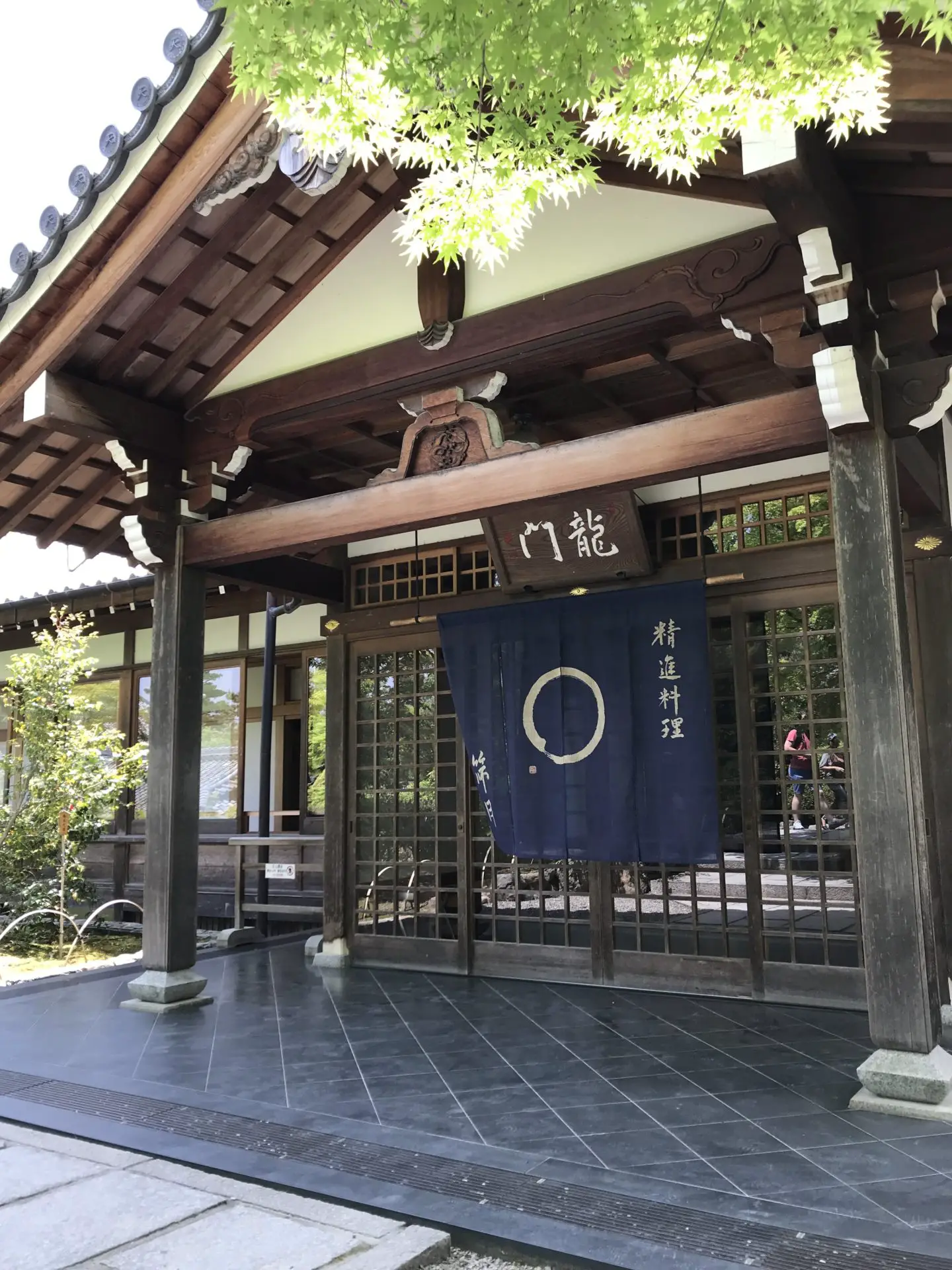
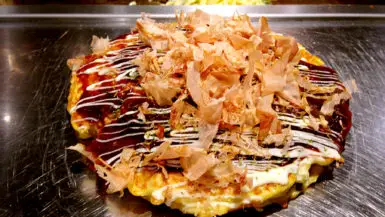


Fabulous post Rosie! I am SUCH a fan of Shojin Ryori, I am keen to try it at every chance I get (I was lucky when I lived in Japan as I got to try it quite a few times when I worked for the prefectural government in Nara.) I always love the goma-dofu and nasu dengaku, but I am excited to try everything.
Have you ever been to Koyasan in Wakayama? The shojin ryori there is spectacular.
I have not been there, but hopefully I can go back to Japan soon and give it a try!
I stayed in a monastery in Thailand for a bit and ate vegan! Gotta say, I don’t think i could be 100% vegan in my life, but somehow vegan monastery food has always been tasty and filling.
It’s hard to stay vegan and is very expensive! I try to only eat meat two or three days a week but I could do better…
Ive always heard that onions and garlic (and some other root vegetables) aren’t allowed because you have to uproot the plant, which kills it but don’t quote me on that